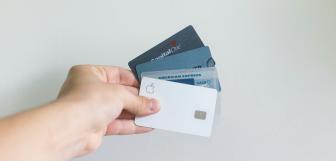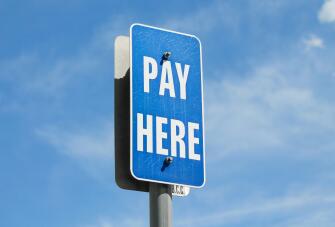Line Of Credit For Business: Time Saving Guide For Start-Ups
If you're starting or growing a business, you're going to need capital. There are tons of ways to invest in your company, with many financing options out there. One way, which the Federal Reserve found to be the most popular, is lines of credit. In fact, 43% of all financing applications were for lines of credit, followed by business loans and SBA lines of credit.
Let's take a closer look at business lines of credit together, shall we?
What is a business line of credit?
A business line of credit is flexible, revolving money that gives you access to cash when you need it. How it works is that a bank or online lender approves your business for a certain amount, or limit. When you withdraw funds, you subtract that amount from your total credit limit to see what’s left. Once you've taken out the money, interest starts building up.
Say you have $10,000 in credit and you spend $2,000, you have $8,000 left in available credit. Because it’s revolving credit, when you pay back the $2,000, you’re back to having $10,000 available again.
When you apply for business line of credit, you can use a bank business line of credit loan over and over, as long as you stay within your credit limits and keep your account in good standing. You don’t have to use it all at once either. You can get it before you actually need it. Maybe you’ll use it for inventory one month and then for an unexpected repair the next.
Business credit line vs a business loan
Now let's answer the small business line of credit vs business loan difference.
A term loan (AKA a business loan) is pretty straightforward. You get a lump sum of money you get for your startup business, upfront and then pay it back on a regular schedule, with interest. The interest rate can be fixed or variable. If you need more cash later, you’ll have to apply for another loan or refinance your loan.
Sometimes, lenders want to know exactly what you’ll use the money for, like a specific project or purchase. But that's not always the case. Term loans are great for bigger expenses, like new equipment or technology upgrades for your business.
If you're thinking about getting a business loan or a small business loan, do some homework on different lenders. Check out the total payback amount and how easy it is to make the payments.
Business line of credit vs business credit card
Both a line of credit and a credit card give you revolving credit, but they work a bit differently. With a line of credit, the money goes straight to your business bank account. You can use it to write checks, pay invoices, or cover payroll. Lines of credit are usually for bigger purchases and come with a maximum limit, so you control how much you spend and when.
Business credit cards, on the other hand, come with a physical card you use to make purchases up to a set credit limit. You also need to make minimum monthly payments on the balance. So, while both options let you borrow and repay (each with their own set of repayment terms), a line of credit is more flexible for larger expenses with a higher credit limit, and a credit card is handy for everyday purchases.
What types of business lines of credit are there?
Now that you've got a decent understanding of what a line of credit is, and why it's different to a business loan or a business credit card, let's take a look at the different types of business lines of credit available. These are your secured and unsecured lines of credit:
Secured lines of credit
A secure line is backed by your assets, like equipment or property. These assets act as collateral, and the lender can take them if you default on the loan.
Unsecured lines of credit
In contrast, an unsecured business line doesn't require any collateral. Small businesses will typically use an unsecured line, making them easier to get, though you might have to pay interest rates that are higher than if you were to take out a secured business line.
How does a business line of credit work?
There are a number of ways you might use a business line of credit. Some depend on how large your line is, and how quickly you can pay it off.
Business lines of credit can be secured before you know what you might need the funds for. They come in handy for unforeseen expenses or managing cash flow.
For example, if you run a salon and the pipes burst unexpectedly, you could use cash from a line of credit to get it fixed quickly, so you don’t lose out on too much business.
Or, let’s say you run a restaurant that also caters to large events. If your invoices aren’t being paid quickly enough but you need to buy inventory for your next job, a line of credit could fill that gap until invoices are paid.
TIP: Check out our guide on how to send an invoice to learn all about managing cash flow efficiently.
Whenever you decide to seek funding for your business — whether it’s a business line of credit, a small business loan, or another form of financing — be sure to do your research, thoroughly review your books, and consult with your legal or financial advisors.
Advantages of a line of credit
Lines of credit offer small business owners like yourself a whole load of benefits, including:
-
Access to instant, ongoing funds: You can access funds (known as your cash access line) as you need them, making it convenient for managing cash flow or unexpected expenses.
-
Flexible financing: They're suitable for projects with unclear costs (which you can trust you'll come across as a small business owner), providing the flexibility to borrow what you need when you need it.
-
Lower interest rates: Generally, lines of credit have lower interest rates compared to credit cards, which can save you money on financing expenses. This is especially true for secured business lines.
-
Secured or unsecured options: Depending on your situation, you can choose between secured lines of credit (requiring collateral) or unsecure lines (no collateral needed).
Drawbacks of a business line
However, it's not all sunshines and rainbows. There are some drawbacks to consider, like:
-
Higher qualification standards: They can be more difficult to qualify for compared to personal loans or small business loans, especially for larger amounts or unsecure lines.
-
Variable interest rates: Interest rates can fluctuate, making it challenging to predict your borrowing costs over time.
-
Fee structures: Lines of credit may come with various expenses, such as annual fees or transaction fees, which can add to your borrowing costs.
-
Collateral for better rates: To secure more competitive interest credit rates, you may need to offer collateral, which poses a risk to your assets if you cannot repay the credit.
It’s important to weigh these factors carefully when considering a business line of credit, as they can impact your financial planning and overall new business strategy.
TIP
Check out our guide on how to send an invoice to learn all about managing cash flow efficiently.
How to get a business line credit?
Securing a line of credit with collateral may take longer because your assets need verification and appraisal for repayment assurance. Whether your line of credit is secured or unsecured can also impact your access to funds and the interest rate you'll pay.
If you’re curious about obtaining a business line of credit, discuss with your lender to understand how secured or unsecured options fit your business. They'll outline the necessary documents for your application.
Business line of credit requirements
So, what do you need to get a business line of credit? Well, the requirements actually vary depending on the credit lender you've used. However, they typically look at things like:
-
Credit score: A good personal credit score and business credit score helps demonstrate your creditworthiness.
-
Revenue: Credit lenders want to see consistent revenue to ensure you can repay the credit line. So, they'll likely ask for your annual revenue or your average monthly revenue.
-
Time in business: Established businesses often have an easier time qualifying than startups. So if you're just starting out, it may be a little harder to find online lenders willing to help.
-
Financial statements: Prepare your balance sheet, income statement, and cash flow statement to show your financial health.
-
Business plan: Outline how you plan to use the line of credit and how it benefits your business.
-
Collateral (if applicable): Secured lines of credit may require assets like equipment or property as collateral.
-
Personal guarantee: You might need to personally guarantee the line of credit, especially for newer businesses.
Fuel your business growth with Epos Now Capital!
Epos Now Capital is all about helping small and medium-sized businesses grow without the usual headaches. They offer cash advances up to £1,000,000 that you can use for things like expanding your business, investing in marketing, stocking up on inventory, or handling unexpected expenses.
What’s cool is there are no fixed monthly payments or hidden fees—you just pay a little bit back whenever your customers pay you. Applying is quick, and you could have the cash in your account within 48 hours. It’s like having a flexible financial safety net that moves with your business’s ups and downs.
Fuel your business growth with Epos Now Capital!
Epos Now Capital is all about helping small and medium-sized businesses grow without the usual headaches. They offer cash advances up to £1,000,000 that you can use for things like expanding your business, investing in marketing, stocking up on inventory, or handling unexpected expenses.
What’s cool is there are no fixed monthly payments or hidden fees—you just pay a little bit back whenever your customers pay you. Applying is quick, and you could have the cash in your account within 48 hours. It’s like having a flexible financial safety net that moves with your business’s ups and downs.
How to get a business line credit?
Securing a line of credit with collateral may take longer because your assets need verification and appraisal for repayment assurance. Whether your line of credit is secured or unsecured can also impact your access to funds and the interest rate you'll pay.
If you’re curious about obtaining a business line of credit, discuss with your lender to understand how secured or unsecured options fit your business. They'll outline the necessary documents for your application.
Business line of credit requirements
So, what do you need to get a business line of credit? Well, the requirements actually vary depending on the credit lender you've used. However, they typically look at things like:
- Credit score: A good personal credit score and business credit score helps demonstrate your creditworthiness.
- Revenue: Credit lenders want to see consistent revenue to ensure you can repay the credit line. So, they'll likely ask for your annual revenue.
- Time in business: Established businesses often have an easier time qualifying than startups. So if you're just starting out, it may be a little harder to find online lenders willing to help.
- Financial statements: Prepare your balance sheet, income statement, and cash flow statement to show your financial health.
- Business plan: Outline how you plan to use the line of credit and how it benefits your business.
- Collateral (if applicable): Secured lines of credit may require assets like equipment or property as collateral.
- Personal guarantee: You might need to personally guarantee the line of credit, especially for newer businesses.
Liked this blog? Check out our helpful guide on restaurant accounting to learn more about handling your finances.
FAQ about a business line of credit
- What is the easiest line of credit to get?
-
The easiest line of credit to get depends on your business’s financial health and credit history. Generally, smaller lines of credit or ones secured by collateral, like equipment, can be easier to qualify for. Online lenders and community banks might offer more flexible options compared to big banks.
TIP: Check out our blog on the best banks for small business to find the right fit for your financial needs.
- Where can I get a business line of credit?
-
You can get a business line of credit from traditional banks, credit unions, online lenders, or even through the Small Business Administration (SBA). Each option has its pros and cons, so it’s good to shop around and compare terms like interest rates, fees, and repayment flexibility.
- What credit score do I need for a line of credit?
-
While requirements vary, most lenders prefer a personal credit score of 600 (you can get a credit report on Experian to find out your score) or higher for a business line of credit. Higher scores generally mean better terms and lower interest rates. Some lenders might also consider your business credit score and financial history for this loan agreement.
- What is the interest rate on a business line of credit?
-
Interest rates for business lines of credit can vary widely based on factors like your creditworthiness, whether the line is secured or unsecured, and current market conditions. Rates can range from low single digits for well-qualified borrowers to higher rates for riskier loans. It’s super important to compare offers and understand how rates are determined.
- Do you need a down payment for a business line of credit?
-
No, you typically don’t need a down payment for a business line of credit. Unlike loans for large purchases like real estate or vehicles, lines of credit provide access to funds as needed without upfront payments. However, some lenders may require collateral or a personal guarantee to secure the credit line.




